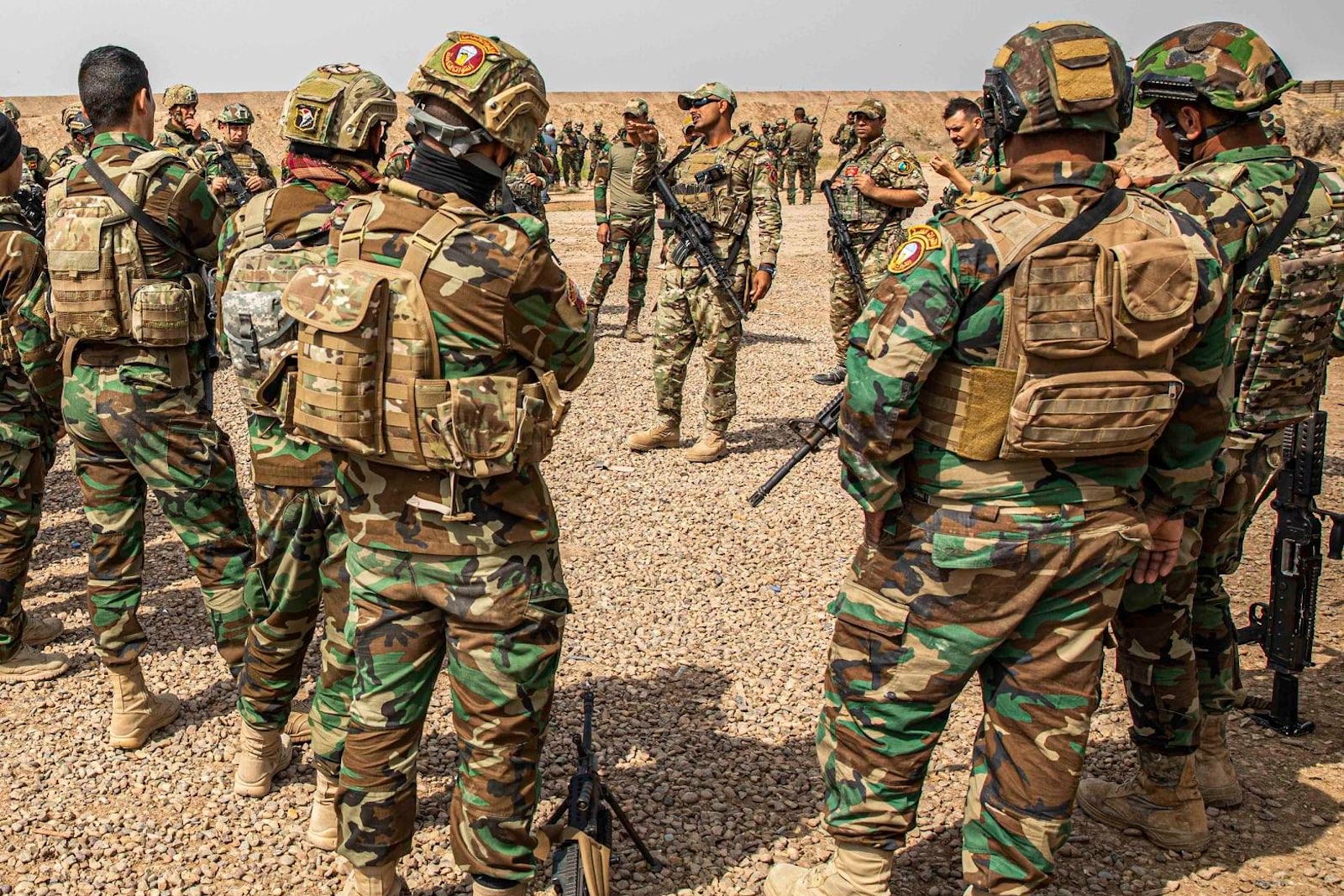
With U.S. Troops Largely out of Iraq, What Comes Next?
On December 29, only two days before the deadline for the United States to withdraw its last remaining combat forces from Iraq, Iraqi Prime Minister Mustafa al-Kadhimi announced that U.S. forces had already left and any remaining troops were there to train and advise the Iraqi military. This might be considered the end of an era but could also be the beginning of a new one. The withdrawal, as many believe, could lead to the resurgence of the Islamic State. Throughout Iraq, the terror group has made its presence felt. With the absence of U.S. troops, an ISIS resurgence would pose a problem for Baghdad.
Early in December, when the U.S. began the practical phase of the withdrawal, ISIS stepped up terrorist attacks in the provinces of Diyala, Salahaddin, Anbar, Kirkuk, and Nineveh. In less than 30 days, the extremist group killed at least 30 Peshmerga fighters and many more Iraqi troops and paramilitary fighters. This was soon interpreted as an alarming precedent which triggered a debate on whether or not Baghdad should ask the U.S. to delay the withdrawal, but it was already too late as the official agreements had been made.
There are roughly four scenarios to consider when considering what comes next in Iraq. If we consider the re-emergence of ISIS as the first likely scenario in the absence of U.S. combat forces, then there are three others that could eventually become realities.
First, a possible ISIS comeback could give Iran-backed Shia militias a chance to justify their existence as they were formed to “assist” Iraq in its war against the Sunni extremist group. Since the latest parliamentary elections, powerful Shia cleric Muqtada al-Sadr, whose Sadrist Movement emerged victorious, has repeatedly called for the dissolution of the militia groups so arms would only be in the hands of the central government. Therefore, a reemergence of ISIS could give the Shia militias the chance to convince influential leaders like Sadr that their existence is still needed.
A second scenario would then lead to a third scenario, which is giving Iran an upper hand again to shape the future of Iraq’s political landscape. Since 2005, when the majority Shia population rose to power, Iran has been a decisive player in Iraq. The strength of the Shia militias would mean Iran’s greater hegemony in Baghdad, where a gap has been left by the U.S. and its allies since the withdrawal.
If these domino-like scenarios are what we should expect, then the last blow will come when Baghdad fails to form a new government — at least an inclusive and successful one. The Shia militias have lost the election, but they are unlikely to let political rivals take power and shape the next government through a democratic process. They, indeed, see the real power coming from military capacity and not public backing, which means they will keep their arms and, therefore, maintain political power.
With the arguments above, Iraq would most likely see a significant surge in violence once again that would help Iran to restructure its influence in Iraq and revive its regional influence, especially after it faced a massive recess due to the killing of Qassem Soleimani, the top Iranian general who was killed in a U.S. drone strike two years ago and was known as the man behind every political move in Baghdad.
